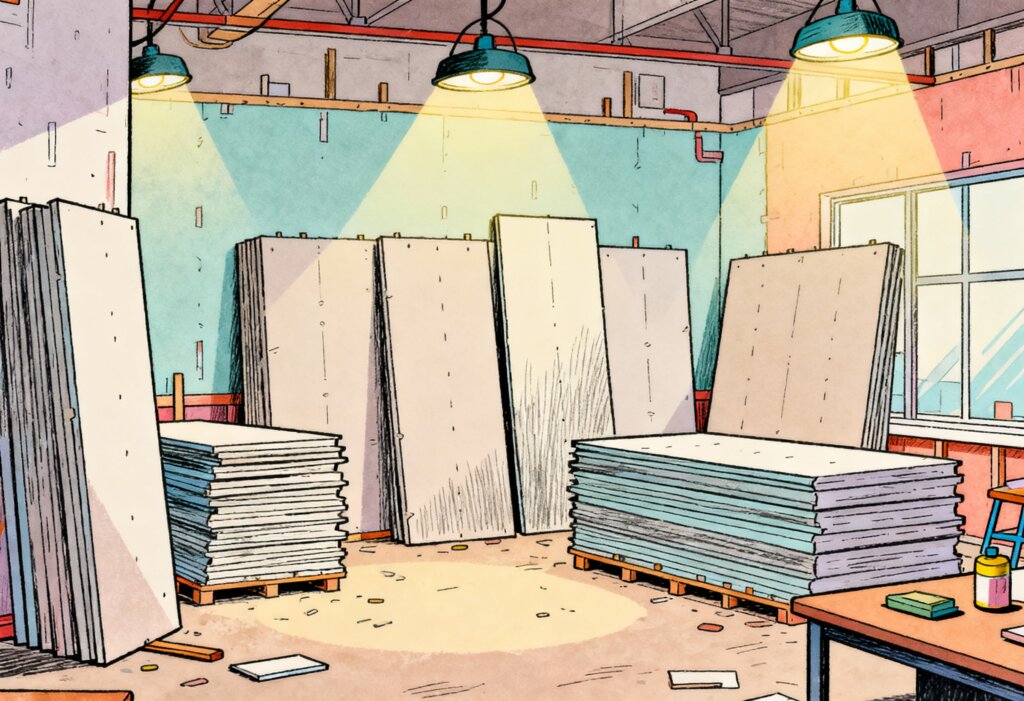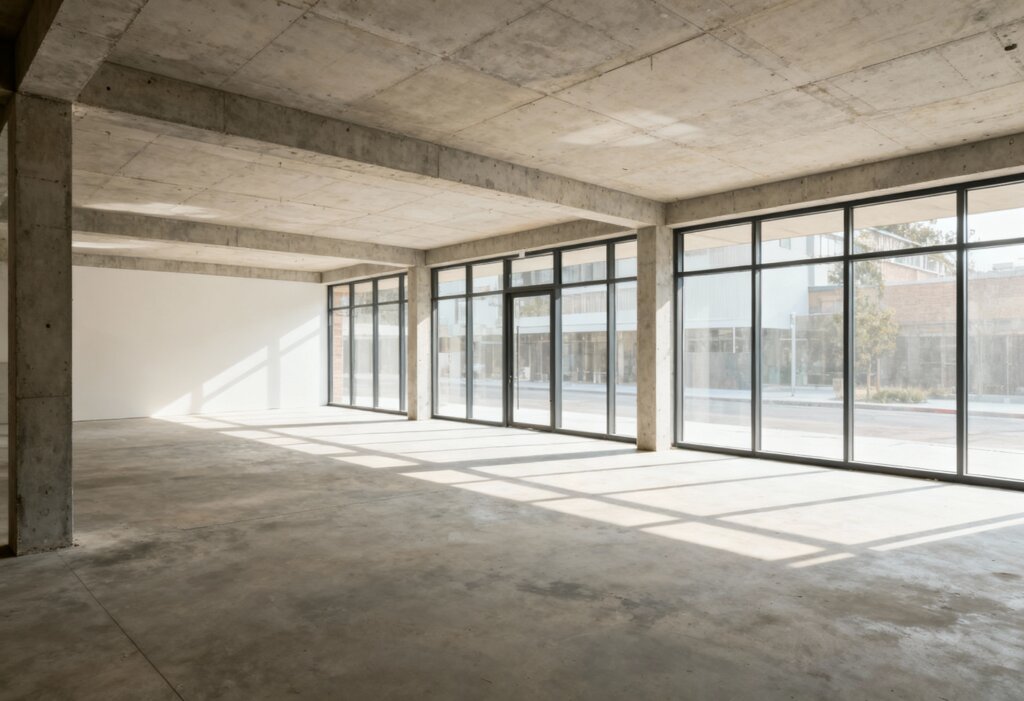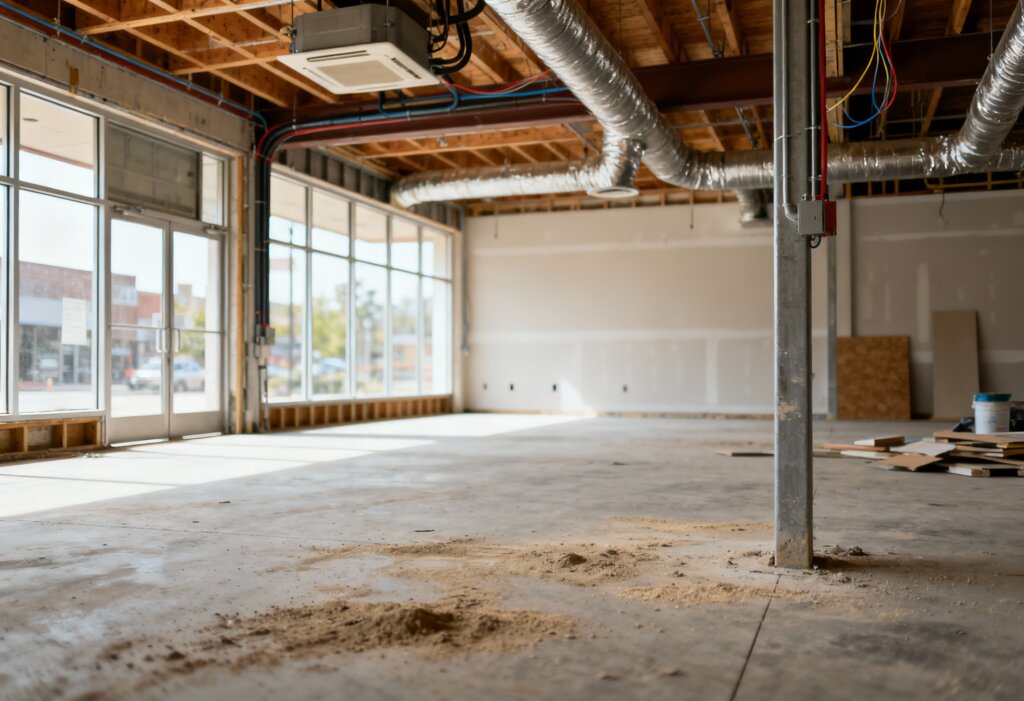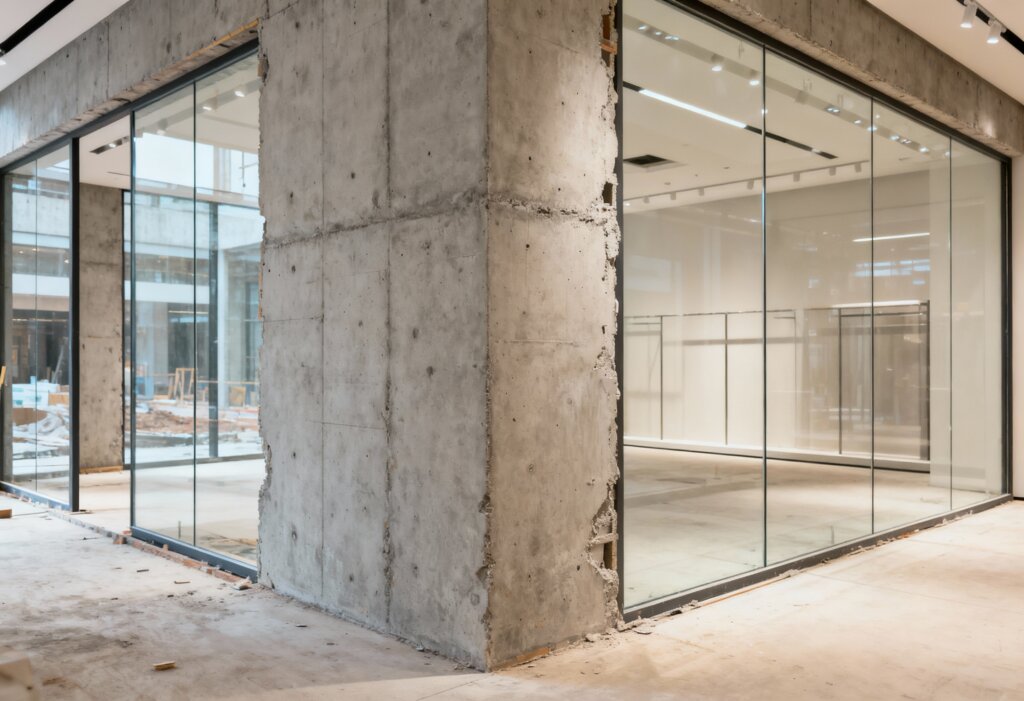Picture this: You’re a growing tech startup, finally outgrowing that cramped co-working spot. You’ve found the perfect 5,000 square foot shell in a bustling downtown building: high ceilings, great light, but it’s basically a blank concrete box. aka, vanilla shell condition. No framed office walls, no wiring for your servers, nothing that screams “innovative workspace.” What now? That’s where tenant improvements and build-out come in, turning raw space into something that actually works for your company.

In today’s commercial real estate world, with hybrid work still shaking things up and businesses chasing top talent, tenant improvements (or TI as we call it) for new or repurposed space are required. Companies aren’t settling for basic junky offices or retail shells anymore. They want spaces that boost productivity, reflect their brand, and yeah, make employees excited to show up for work. According to a recent Cushman & Wakefield report, tenants are pushing hard for customized setups, especially as vacancy rates hover high in some markets. Landlords know this, so they’re often willing to chip in – hence TI allowances. Navigating TI can feel overwhelming if you’re new to it, so let’s break it down.
What Exactly Are Tenant Improvements?
At its core, tenant improvements are the custom changes made to a leased commercial space to fit the tenant’s needs. We’re talking alterations inside the rental unit, not the building’s roof or structure, which stays the landlord’s domain. These can range from simple cosmetic tweaks to full build-outs.

Think of it like renting an apartment but for your business. The landlord hands over the keys to a “vanilla shell” (basic floors, walls, HVAC), and you make it your own. Common examples? In offices, that might mean adding partition walls for private meeting rooms, upgrading lighting to energy efficient LEDs, or installing high speed cabling. For retail, it’s often about creating eye catching storefronts, display areas, or fitting rooms.
So why bother? A well done TI setup can increase employee and customer satisfaction and even property value down the line. But here’s the kicker: most leases involve some back and forth on who pays for the work and how much.
Tenant Improvement Allowances (TIA)
This is where things get interesting and negotiable. A tenant improvement allowance (often called TIA or just “TI dollars”) is cash the landlord kicks in to help cover those build out costs. It’s usually quoted per square foot, and averages have shifted a bit lately.
From what I’ve seen in 2024 2025 market reports, typical office TI allowances range from $20 to 60 per square foot for standard spaces, but can climb to $80 to 100+ in premium Class A buildings or competitive markets like San Francisco or New York. Retail and industrial? Often lower, maybe $15 to 40, unless you’re doing heavy upgrades like grease traps for a restaurant. In a tenant’s market, with vacancies still elevated post pandemic, landlords are sweeter on these numbers to lock in long term leases. The amount the landlord contributes is usually tied in to how long the lease is and its base rental rate.
How’s it paid out? A few common ways:
- Dollar per square foot allowance: Landlord reimburses you up to, say, $40/sf after you submit invoices. You front the costs, they pay back.
- Turnkey build out: Landlord handles everything based on your plans, delivering a ready to go space. Convenient, but you lose some control. This is great and less headaches if you have a plan. It’s great for retail franchises in a large strip mall for example.
- Hybrid or stipulated sum: A fixed pot of money you manage, with any leftovers sometimes yours (negotiate this!).
Pro tip: Always get multiple contractor bids early. Nothing kills a deal like realizing mid negotiation that your “dream layout” blows the budget way out. Watch for “amortization”; sometimes landlords spread the TI cost into higher rent over the lease term. It’s not free money, but it’s smart financing.
Who Handles the Work and the Headaches?
You’d think the tenant always runs the show, but not quite. Some options include:
- Tenant controlled: You hire your architect, general contractor, and oversee the permits process. More flexibility, potential savings if you’re savvy.
- Landlord controlled: They manage it, often for simplicity. Faster sometimes, but their contractors might pad costs.
- Work letter in the lease: This details exactly what’s included, timelines, approval processes.
Common pitfalls? Permits dragging on (hello, local govt bureaucracies!), change orders jacking up prices, or disputes over what’s “improvement” vs. “maintenance.” One retail tenant got stuck because the landlord claimed new signage wasn’t covered; lesson learned: spell it out in the lease and LOI.

Here’s a quick list of popular TI items tenants use it for:
- Interior walls/partitions and doors
- Flooring, paint, ceilings
- Lighting and electrical upgrades
- HVAC tweaks or additions/replacement
- Plumbing (big for cafes or medical), laundry, bathrooms, drains
- Data/cabling tech setups
- Sometimes millwork or branding elements
Furniture and fixtures? Usually not. That’s on the tenant.
Negotiation Tips That Actually Work
Leases aren’t take it or leave it anymore. Here’s what moves the needle:
- Leverage market data: Pull recent comps from your broker. If similar spaces nearby got $50/sf on their lease, use it.
- Tie to lease length/credit: Strong tenants signing 7 to 10 years? Push for more TI dollars.
- Ask for extras like free rent during construction or the right to recapture unused allowance.
- Get everything in writing: Vague language leads to fights. Define approval timelines (e.g., landlord has 10 days to review plans and approve, etc).
- Consider alternatives: No big TIA? Negotiate rent abatement or landlord funded “building standard” package.
Anyway, in softer markets, tenants hold cards.
Summary: Your Space, Your Rules (Mostly)
Tenant improvements aren’t just construction jargon, they’re how businesses create awesome environments that attract talent, wow clients, and frankly, make work less soul crushing. If done right, they can pay off in productivity and retention. Done wrong? Overruns, costly errors, delays, regrets.
Key takeaways? Plan early, budget realistically (add 10 to 20% contingency), negotiate fairly, and always involve professionals for guidance. A good broker and attorney will save you many headaches. As we head into 2026, with sustainability and flexibility top of mind, expect more TI dollars flowing toward green upgrades and adaptable layouts.
Ready to turn that blank vanilla shell property into your company’s perfect home?
If you’re scouting space or renegotiating a lease without an an agent, drop us a line. We’ve helped others navigate TI without the drama. Let’s chat about your business and location needs.

